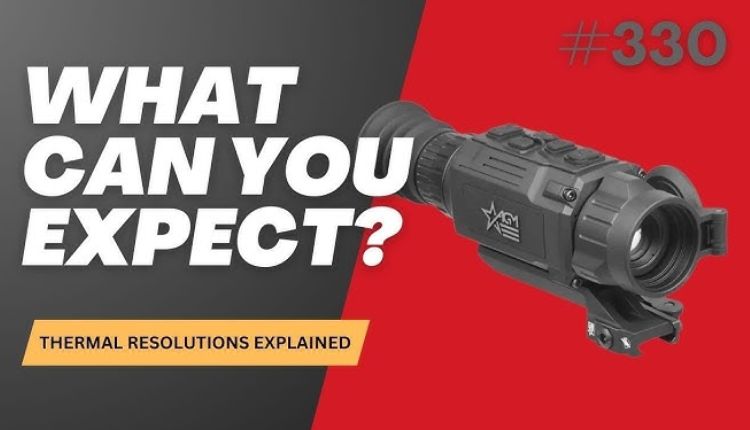When it’s time to purchase a thermal scope, choosing the right one isn’t as easy as it might seem. More expensive doesn’t always equal better, and it is important to compare the specs to make sure the right one is purchased. Otherwise, it’s possible to waste a significant amount of money on features that aren’t needed or a low-quality scope priced too high. When looking at thermal scopes, it’s important to compare the resolution and the image quality by looking at the following.
Maximum Viewable Distance
Going through an introduction to thermal imaging scopes is recommended for anyone who wants to purchase one to understand the different ranges and how to choose a scope based on range. The basic range listed is the maximum viewable distance, which can help with determining just how far away someone can view an object in the scope. At this point, the object is tiny and unrecognizable, but it is possible to see it. Most manufacturers will list this distance, so it’s possible to compare the maximum viewable distances when looking at scopes.
Recognition Range
Though the maximum viewable distance is important, it’s also a good idea to know the maximum distance at which something is easier to recognize. In general, this is around 40% of the maximum viewable distance, and it occurs when the object being seen takes up at least six pixels. At this range, it may not be possible to identify an object, but it is possible to determine the type of animal or object being seen through the scope. There won’t be many details visible, but it’s easier to see the shape of the object.
Identification Range
Another distance to consider is how far away an object can be further identified. This is typically around 20% of the maximum viewable distance, and it occurs when the object covers at least 12 pixels. At this range, it should be possible to see the object more easily, and it may be possible to see more details. For instance, it may be possible to identify a particular species instead of just the type of animal.
Sensor Resolution
The resolution for a scope depends on how many pixels make up the sensor. This is a number like 1280×720, where one number is the number of vertical pixels and the other number is the horizontal pixels. The higher the number is, the better the resolution on the scope, and the easier it is to see objects through the scope.
Digital Zoom
Some scopes also include a digital zoom that can help zoom in on the object and make it easier to see from a further distance. The digital zoom can help to make the size of the object larger and easier to see, but it will be more blocky because it is pixelated. Basically, the resolution doesn’t increase, so the object won’t be clearer; it’ll just be larger.
If you’re ready to buy a thermal scope, make sure you understand what makes them different and how to choose one that’s going to be a good fit for your needs and budget. Stick with high-quality scopes from a reputable company to get more for your money and make sure the scope will work properly when you need it. Check out the options today to find the right one for your needs.






